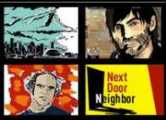Tony Bennett’s Bagel
By Matthew Robinson
I was at the 1996 Montreal jazz Fest with my (then) girlfriend. We were walking through the food court under the hotel on our way to press conference featuring my musical hero Tony Bennett. The place was bustling. But when I saw a man in a gingham shirt and khakis sitting alone eating a bagel and drinking coffee. I stopped in my tracks.
“Do you know who that is?” I asked my (then) girlfriend.
“No,†she replied.*
“That’s Tony Bennett!” I squealed.
“No it’s not,†she said.
“How would you know?” I asked, moving away from her and towards the table at which my idol sat alone eating undisturbed…for now.
“Um…Mr. Bennett,” I began, my hands clasped at my heart, holding it in as Tony Bennett turned to see who was addressing him.
“Um…I don’t mean to…bother you, but…I came from Bost-”
“You’re from Boston?” the proud Berklee father exclaimed, leaping to his feet. “Wow! Hey — you want some bagel?”
“No, thank you, Sir,†I stammered. “I just-”
“What? You want a picture,†he surmised, seeing my (then) girlfriend with the disposable camera in her hand.
“Well, if you wouldn’t—”
“Of course,” he beamed, putting his hand on my shoulder and smiling that winning smile.
Of the 24 pictures my (then) girlfriend took that trip, this was the one that did not come out.* But I still have the autograph framed in my bedroom.
Fast forward to 13 months later back in Boston.
Mr. Bennett has just finished another spectacular show, during which I have somehow been given the privilege of watching him from the stairs to the stage.
After the show, I am escorted backstage, a cigar box full of CD covers, pictures, and Sharpies in hand. Immediately figuring out my intentions, one of Tony’s handlers steps directly into my path.
“He can’t do all of those,” he says.
Then, from over his shoulder, I hear a familiar voice.
“Let him through, Johnny.”
As Johnny steps aside, Mr. Bennett’s eyes lock on mine.
“Didn’t we meet last year in Montreal?”
* This is one of the reasons she is now my “then†girlfriend.





